Central Bank Scorecard: Next Rate Moves Crucial as European Crisis Threatens Recession

It's been an active week for global central bank news, with minutes from rate setting meets released in Britain, Australia, Canada and Japan as well as testimony from officials in the United States. In an effort to keep track of the various policy frameworks in place at the moment, the IBTimes UK has put together its own "Central Bank Watch" report with key rates, dates and details from the world's most important policy makers.

Bank of England: (Mervyn King)
Last announcement: 5 July
Next meeting: 2 August
Key rate: "Bank rate" at 0.50 percent
Highlights from last minutes: "The near-term outlook for GDP growth had weakened. It now seemed possible that output would be roughly flat over 2012 as a whole, implying a period of two years where there had been little or no economic growth - a near-term picture somewhat weaker than had been expected at the time of the May Inflation Report. Some of that evidence had begun to emerge before the Committee's previous meeting. But the survey data had continued to weaken this month. This suggested that a further margin of spare economic capacity would open up. Global demand had slowed, and the near-term outlook was weaker than the Committee had assumed in May, largely due to the impact of the euro-area financial crisis."
The Story:
Outside of the Fed, the BoE might have the most complicated task of any central bank in the world, given its proximity to the European debt crisis, the on-going scandal surrounding libor rigging, Britain's double-dip recession and the myriad policy tools Mervyn King has deployed to arrest the persistent weakness.
The Bank has a £375 asset purchase programme in the field (one it just lifted by £50bn earlier this month), an emergency repo facility that launched only last month, a bank-lending scheme it hopes will grow credit by around £80bn and the lowest base lending rate since the Bank was established in 1694.
Growth forecasts are being lowered by many as indications of a second-half recovery being to fade thanks to grim spring weather, Diamond Jubilee Celebrations and the disruption from the London Olympic Games. Still, a modest improvement in unemployment (now 8.1 percent) and the slowest inflation in 2.5 years (2.4 percent) might buy the Bank enough time gauge the success of its extraordinary policy tools before it takes another look at lowering its key lending rate from the current 0.5 percent.
View on Europe: "There were increasing signs that the threat of a disorderly resolution of the financial tensions in the euro area was affecting growth at home. Information during the month suggested that export prospects had weakened, which would further impede the UK economy's rebalancing away from domestic demand towards net exports."
https://www.bankofengland.co.uk
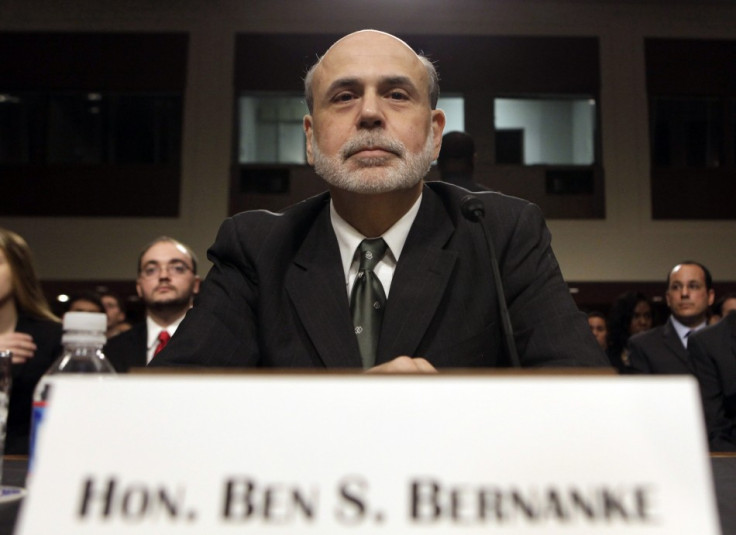
Federal Reserve: (Ben Bernanke)
Last Meeting: 19 June/ 20 June
Next Meeting: 31 July/ 1 August
Key rate: Federal Funds rate at 0.0 percent to 0.25 percent
Highlights from minutes: "Growing concerns about developments in the euro area and weaker-than-expected economic data in the United States and abroad both weighed on financial markets since the time of the April FOMC meeting. The deterioration in investor sentiment was tempered to an extent by market participants' expectations for further policy accommodation by central banks as well as by the anticipation of additional measures to address European fiscal and banking issues."
Fed Chairman Ben Bernanke gave a sober analysis of the US economic situation in his semi-annual appearance before the Senate Banking Committee, but offered little in terms of hints as to what his next policy move might be. Rates have stayed at the near-zero target for nearly four years and the Fed has taken on more than $2.3tn onto its balance sheet in its aggressive programme of quantitative easing.
The moves have had a series of impact - good and bad - that continue to be hotly debated. The dollar weakness it's linked to has helped drive exports and lift corporate profitability, but it's yet to translate into sustained employment growth. The economy created a net new 226,000 jobs each month from January to March, but that pace has slowed precipitously to 75,000 each month since, keeping unemployment in the world's largest economy north of 8 percent for more than three years.
Persuasive arguments can be made in any direction at this point and the looming "fiscal cliff" (expiring tax breaks and automatic spending cuts triggered by last year's Budget Control Act) alongside this fall's Presidential elections basically make any next step impossible to predict.
View on Europe: "Heightened financial strains in the euro area and indications of a weaker pace of global economic activity weighed on foreign financial markets during the intermeeting period ... indicators of the conditions of European banks continued to deteriorate ... The risks to the U.S. financial system emanating from strains in Europe appeared to increase over the intermeeting period."
http://www.federalreserve.gov/monetarypolicy/fomccalendars.htm
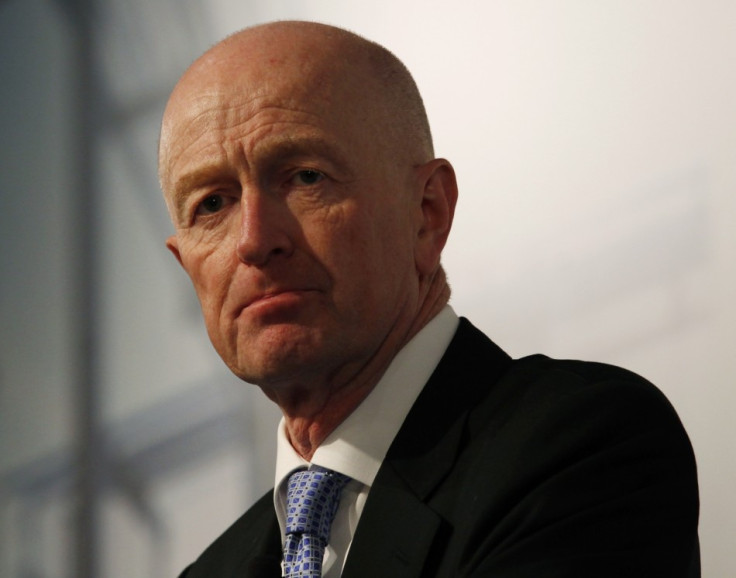
Reserve Bank of Australia: (Glenn Stevens)
Last meeting: 3 July
Next meeting: 7 August
Key rate: "cash rate" at 3.5 percent
Highlights from last Minutes: Growth "probably slowed a little from that reported for the first quarter to be around trend pace ... Mining investment had been a little stronger than had been expected, and members noted that growth in much of the non-resource economy had remained modest ... Member continues to view it as appropriate for interest rates to be a little below average given evidence of slower global growth and the low rate of inflation in Australia."
Story:
Australia keeps a firm eye on developments in China, its biggest export partner and the key driver in its astonishing growth story. That said, even with a better-than-expected 1.3 percent advance in first quarter GDP, the RBA is mindful of China's slowdown and the blunt it will have on exports.
The RBA has cut its key "cash rate" by 1.25 percent in the past 8 months, with analysts expecting another 25 basis points to 50 basis points in easing between now and the end of the year.
We'll get a bit more clarity on the RBA's thinking when second quarter GDP is released in September, but unemployment barely moving from its 5.2 percent level and the Australian dollar already trading at a premium to the greenback as investors pile into the high-rate market, the RBA may be tempted to move even lower than the consensus 3 percent floor.
View on Europe: "The election outcome in Greece and announcements regarding recapitalisation of Spanish banks provided some reprieve from mounting fears of a near-term escalation of the crisis in Europe. Nevertheless, members noted that the possibility that the situation in Europe could deteriorate again and spill over to other economies remained a substantial risk."
http://www.rba.gov.au/schedules-events/calendar-2012.html
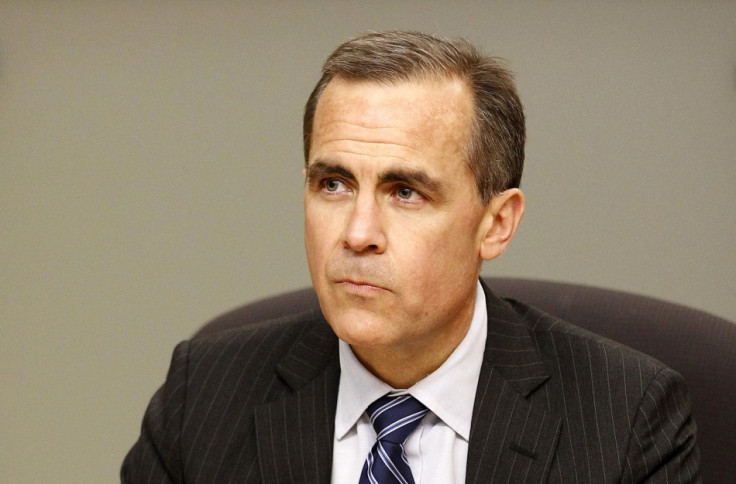
Bank of Canada: (Mark Carney)
Last meeting: 17 July
Next meeting: 5 September
Key rate: Target overnight rate at 1 percent
Highlights from last minutes: "While global headwinds are restraining Canadian economic activity, domestic factors are expected to support moderate growth in Canada. The Bank expects the economy to grow at a pace roughly in line with its production potential in the near term, before picking up through 2013. Consumption and business investment are expected to be the primary drivers of growth, reflecting very simulative domestic financial conditions. However, their pace will be influenced by external headwinds, notably the effects of lower commodity prices on Canadian incomes and wealth, as well as by record-high household debt."
The Story:
No surprise on holding its key rate steady at 1 percent but the mildly hawkish language - "some modest withdrawl of the present considerable monetary stimulus may become appropriate" - reminds us that this is the only major central bank in the world that has a tightening bias to its rate forecasts. Oddly, the hawkishness comes in tandem with the Bank's markdown of growth forecasts of the world's 10<sup>th largest economy, which it now expects will expand by 2.1 percent this year, 2.3 percent next year and 2.5 percent in 2014.
Key concerns for Mark Carney and Co remain both the pace of recovery in the United States (where around 65 percent of Canada's exports are shipped) and the incredible build-up of domestic household debt thanks to a decades-long property boom.
View on Europe: "While the economic expansion in the United States continues at a gradual but somewhat slower pace, developments in Europe point to a renewed contraction ... The Bank's base case projection assumes that the European crisis will continue to be contained, although this assumption is subject to downside risks".
http://www.bankofcanada.ca/monetary-policy-introduction/key-interest-rate/schedule/
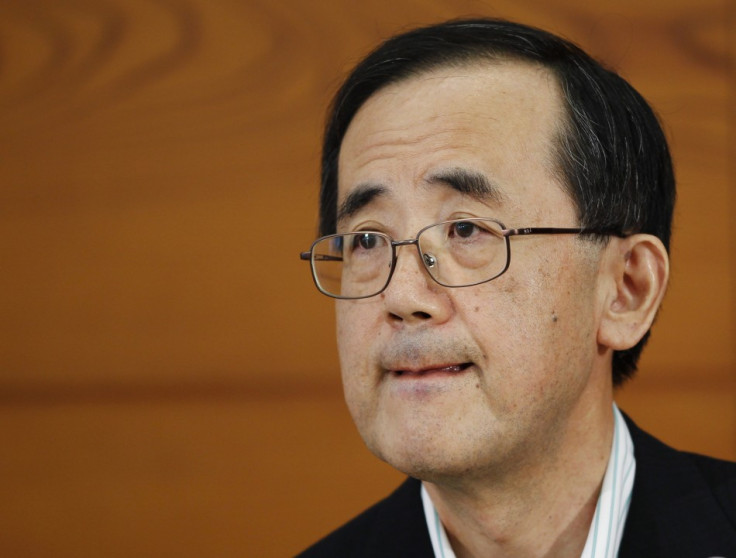
Bank of Japan: (Masaaki Shirakawa)
Last meeting: 11 July/ 12 July
Next meeting: 8 August/ 9 August
Key rate: "Uncollateralized overnight call rate" at 0.07 percent to 0.095 percent
Highlights from minutes: "Regarding recent developments in the economy, members agreed that, although a recovery in overseas demand was somewhat delayed, Japan's economic activity had started picking up moderately as domestic demand remained firmer than expected, mainly supported by reconstruction-related demand. They concurred that public investment had been increasing with the progress in the execution of the budget related to the earthquake disaster, and business fixed investment had been on a moderate increasing trend with corporate profits improving. Members shared the recognition that, against the background of improvement in consumer sentiment, private consumption had continued to increase moderately due to the effects of measures to stimulate demand for automobiles, and that housing investment had generally been picking up."
The Story:
Near-zero rates for nearly two years and constant tinkering with various policies of stimulus and quantitative easing have generally failed to ignite the key spark that will deliver the kind of game-changing turnaround Japan's economy has been seeking for at least a decade.
But Shirakawa keeps trying. The BoJ increased its asset purchase programme by 5tn yen (xx) to 45tn yen a cut a loan facility by 5tn yen to 25tn. Historic low rates on domestic securities have hampered the bank's ability to effectively add much-needed stimulus into its banking sector. Finance Minister Jun Azumi has pressed the bank to do more, and this week Shirakawa scrapped a 0.1 percent yield minimum on bonds the BoJ can buy as part of its QE programme, a move which may allow banks and financial institutions to sell debt that currently trades at a negative yield to the BoJ in exchange for cash.
BoJ members are seeing a modest economic pick-up, however, and its most recent overview of the short-term outlook - the Tankan - indicated some positive momentum. In fact, the Bank upgraded the economic assessment of all nine of Japan's regions for the first time in three years.
View on Europe: "In global financial markets, some nervousness continued to be seen, mainly reflecting concern over the European debt problem ... although risk aversion among investors had temporarily eased following the announcement of financial assistance to Spain by the Eurogroup, the likelihood that tensions in the markets could further intensify was not small, as there remained a high degree of uncertainty about the European debt problem -- including how fiscal consolidation and economic structural reforms in Greece following its election in June would develop -- and consequently the global economy. On this point, a few members expressed the view that tensions in the markets regarding the European debt problem had intensified and eased repeatedly, and that this cycle was shortening gradually."
http://www.boj.or.jp/en/mopo/mpmsche_minu/index.htm/

People's Bank of China: (Zhou Xiaochuan)
Last rate decision: 6 July
Next rate decision: unknown
Key rates: "One-year benchmark loan interest rate" at 6 percent; "One-year benchmark deposit rate" at 3 percent
Required Reserve ratio: Big banks, 20 percent: Mid-sized banks, 18 percent; Rural co-operatives, 16.5 percent
Highlights from minutes (Online statement): "The Monetary Policy Committee of the PBC convened its second quarterly meeting in 2012 in Beijing days ago. The participants analyzed (sic) current economic and financial situations at home and abroad. In their view, China's economic and financial sectors were developing in a generally stable manner. The economic growth was within the range of the policy target while the growth of the overall price level slowed down."
The world's second-largest economy will grow at the slowest pace in 13 years this year, and that's really all you need to know about what's keeping Zhou Xiaochuan and his PBOC colleagues awake at night. They've already cut rates twice in a month - and trimmed reserve requirements for its banks - in an effort to balance the need for stronger domestic demand, tame inflation, sustained employment growth and a managed property market bubble.
The reserve releases should free-up 465bn yuan (xxx) for new lending, and the rate cuts will undoubtedly ease credit conditions around the nation. However, given China's need for longer-term structural reforms (even in the face of economic weakness) analysts aren't betting on a renewed round of stimulus from the PBOC.
View on Europe: "Given the difficulties and setbacks in global recovery and capricious development of the European debt crisis, large uncertainty remained in the global outlook."
http://www.pbc.gov.cn/publish/english/963/index.html
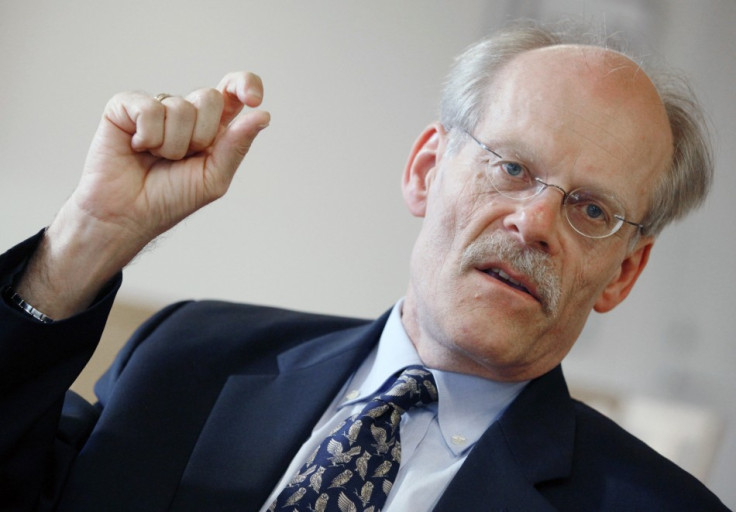
Riksbank: (Stefan Ingves)
Last meeting: 3 July
Next meeting: 5 September
Key rate: "Repo rate" at 1.5 percent
Highlights from minutes: "A central issue, for several members of the Executive Board when making the monetary policy decision, was how the unexpectedly strong development of the Swedish economy should be seen in relation to the increased concern about weaker development in the euro area. The Executive Board agreed that the repo rate needs to be low to stimulate the economy. However, there were differences with regard to how expansionary monetary policy should be ... (however) The risk with short-term solutions is that they only move the risks around in the system. Then reliefs only arise for a short period that lasts until the markets have figured out where the risks have gone."
The Story:
Always one of the most transparent of central banks, Ingves and his Riksbank colleagues have telegraphed a fairly predictable trajectory for Sweden's benchmark "repo" rate. Having lowered it twice since last December, the Bank says there's a 30 percent change of cut in September and 40 percent chance of cut in October.
If there's guesswork involved in the next rate move, however, it's going to be based on both the resilience of the domestic economy and any potential spill-over from the European debt crisis. First quarter GDP showed a surprise 0.8 percent expansion after the first negative quarter since 2009 and analysts say the full year tally is likely to reach a solid 2.8 percent in 2014.
The Nordic region's largest economy has low inflation, hovering around 1 percent, low debt-to-GDP, expected to fall to 37 percent this year, and a surprisingly robust consumer base. However, unemployment has spiked past 8 percent recently, taking a toll on consumer and industrial confidence and perhaps giving the Riksbank a bit more leeway - given the tame rate of inflation - to push rates lower.
View on Europe: " ... it was noted that there is unease in Europe that is casting a shadow over the Swedish economy. A central issue, for several members of the Executive Board when making the monetary policy decision, was how the unexpectedly strong development of the Swedish economy should be seen in relation to the increased concern about weaker development in the euro area."
http://www.riksbank.se/en/
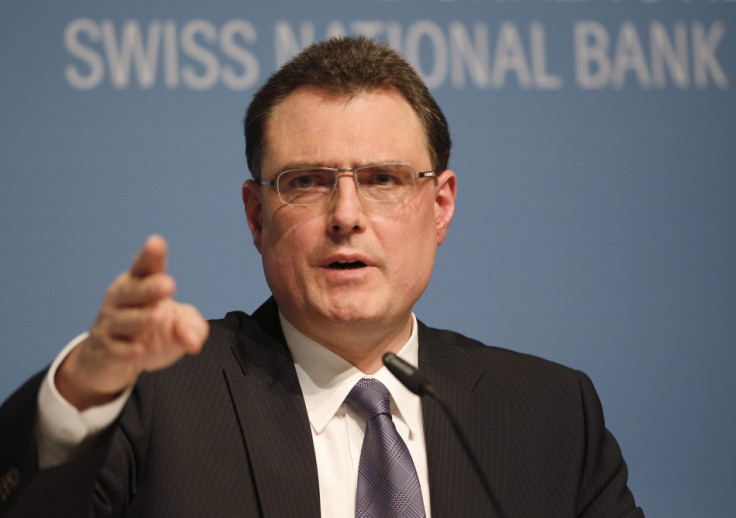
Swiss National Bank: (Thomas Jordan)
Last Meeting: 14 June
Next Meeting: September
Key rates: 3-month Libor target rate at 0.0 percent to 0.25 percent
Highlights from minutes (Quarterly Bulletin): "The SNB expects that the global economy willonly recover slowly. While the emerging economiesmake a major contribution to global growth,momentum in the advanced economies will remain subdued ... Switzerland will experience a significant economic slowdown over the rest of theyear. Only because of the unexpectedly strong winter half-year does the SNB now expect growth ofaround 1.5% for 2012. "
The Story:
With its key rate held at effectively zero and the European sovereign debt crisis surrounding him, new Swiss National Bank President Thomas Jordan's prime task these days is the defence of the Franc. Risk-averse investors have been dumping Euros for months now in an effort to buy their way into both a safe-haven currency and a diversification from the Eurozone's myriad woes. The flows, of course, have spiked the Franc's value on international markets and threaten to slow export growth and incite deflation as a result. Consumer prices fell 1.1 percent year-on-year last month.
In response, the SNB instituted a "cap" of 1.2 Francs to the Euro last September, under the leadership of former President Philipp Hilderbrand, who was forced to step down from his post when it was revealed that his wife had purchased $504,000 worth of US dollars just weeks before the cap was put in place. The SNB's foreign currency reserves rose 19 percent last month as it spent the equivalent of nearly 60 billion Swiss francs in trying to hold down its value on international markets. The efforts, however, have meant the SNB has built foreign currency reserves worth nearly two-thirds of Swiss GDP. Whether this will take the Bank into negative equity won't be known until it publishes its semi-annual results on 31 July.
View on Europe: "In Europe, in particular, economic activitywill be extremely weak on account of the financialand debt crisis ... The risks for the Swiss economic situationremain exceptionally high. The uncertainty aboutfuture developments in the euro area has again risen."
http://www.snb.ch/en/iabout/snb/hist/id/hist_archiv

European Central Bank: (Mario Draghi)
Last Meeting: 5 July
Next Meeting: 2 August (Frankfurt)
Key rates: "Fixed rate tenders" in "main refinancing operations" rate at 0.75 percent; "Deposit Facility" at 0.0 percent
Highlights from minutes (Prepared press briefing): "The risks surrounding the economic outlook for the euro area continue to be on the downside. They relate, in particular, to a renewed increase in the tensions in several euro area financial markets and their potential spillover to the euro area real economy. Downside risks also relate to possibly renewed increases in energy prices over the medium term ... risks to the outlook for price developments continue to be broadly balanced over the medium term. The main downside risks relate to the impact of weaker than expected growth in the euro area. Upside risks pertain to further increases in indirect taxes, owing to the need for fiscal consolidation, and higher than expected energy prices over the medium term."
The Story:
With five of its 17 currency partners on EU/IMF life-support and the region balancing on the edge of recession with record-high unemployment of 11.1 percent, the stakes would be high enough for any central bank. But Mario Draghi has to also deal with the (at times compromising) task of stabilizing interest rates in the sovereign bond market (while taking on more and more risk onto a balance sheet that has no defined taxpayer backstop) as he grapples with the principal responsibility of "price stability" in the single currency area.
As inflation has eased, however, his headaches haven't. This month's refinancing rate cut, alongside the lowering of the bank's key deposit rate, has taken has taken a back seat to speculation that the ECB will re-start its dormant Securities Markets Programme. Part of the so-called "non-standard" measures the ECB can use in its role of maintaining price stability within the Eurozone. The SMP allows the ECB the power to buy bonds in the secondary - but not the primary - market to help lower the effective borrowing costs of members under financial strain. First launched in May 2010, the programme has bought around €210.5bn in Eurozone bonds (but won't provide specific details). It hasn't been active since its last round of purchases in March of this year.
http://www.ecb.int/home/html/index.en.html
© Copyright IBTimes 2025. All rights reserved.





















